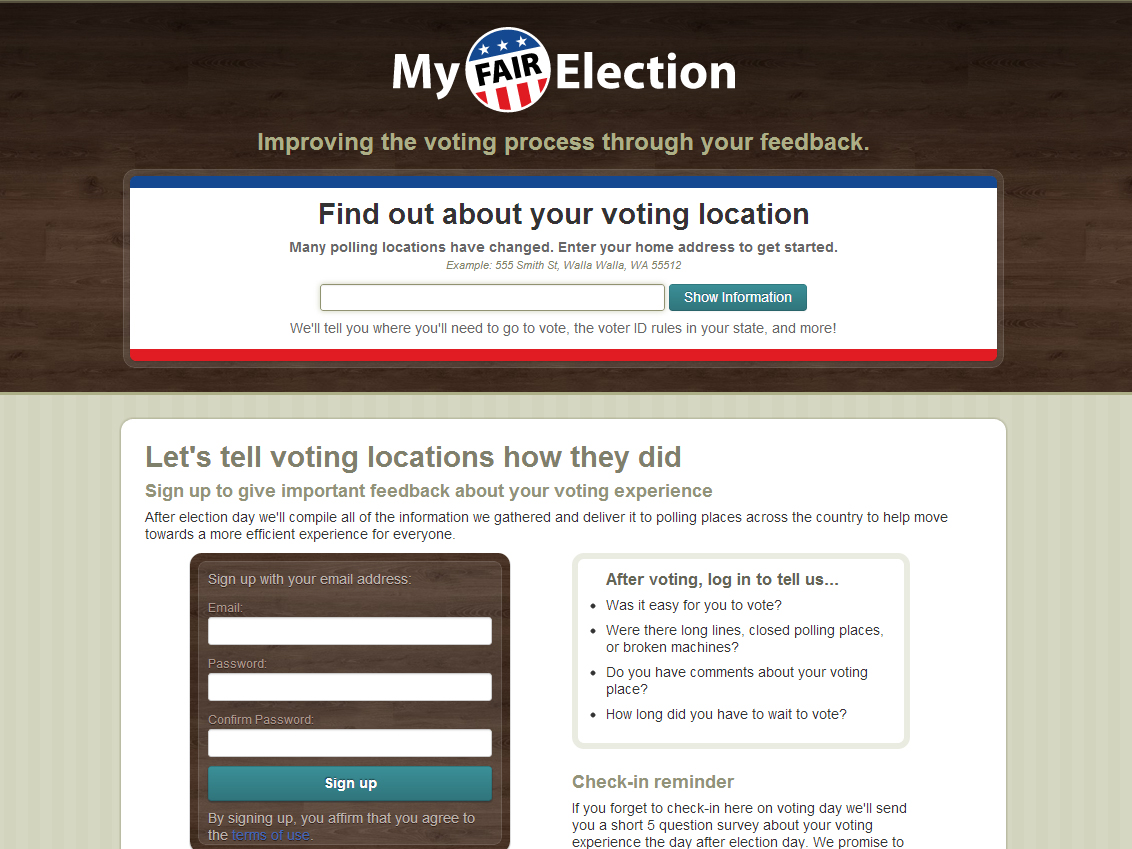Crowdsourced Ratings Could Help Improve Lousy Polling Places
Every election year brings new stories of polling stations around the country failing to properly serve their respective communities. Rude or unhelpful staff, poor crowd management, and broken voting machines (see “The States with the Riskiest Voting Technology”) not only inconvenience voters—these issues also affect final tallies.
Archon Fung, a professor at Harvard’s Kennedy School of Government, thinks his new website, could help address these problems. By serving as a sort of “Yelp for democracy,” as he calls it, the site, MyFairElection.com, will give registered users the chance to rate their polling stations on Election day, using a scale of one to five stars. The collected data will be the basis of a color-coded map. “If tens of thousands of people participate,” says Fung, “we’ll be able to see what election conditions are like all over the United States in real time.”
Election Day will likely be too late to vastly improve problematic polling places, but if the site collects enough useful data it could help change things next time around. And, after the election, says Fung, the numbers will be used to “help election officials and civic organizations improve the voting process in the years going forward.”

Keep Reading
Most Popular
Large language models can do jaw-dropping things. But nobody knows exactly why.
And that's a problem. Figuring it out is one of the biggest scientific puzzles of our time and a crucial step towards controlling more powerful future models.
The problem with plug-in hybrids? Their drivers.
Plug-in hybrids are often sold as a transition to EVs, but new data from Europe shows we’re still underestimating the emissions they produce.
Google DeepMind’s new generative model makes Super Mario–like games from scratch
Genie learns how to control games by watching hours and hours of video. It could help train next-gen robots too.
How scientists traced a mysterious covid case back to six toilets
When wastewater surveillance turns into a hunt for a single infected individual, the ethics get tricky.
Stay connected
Get the latest updates from
MIT Technology Review
Discover special offers, top stories, upcoming events, and more.